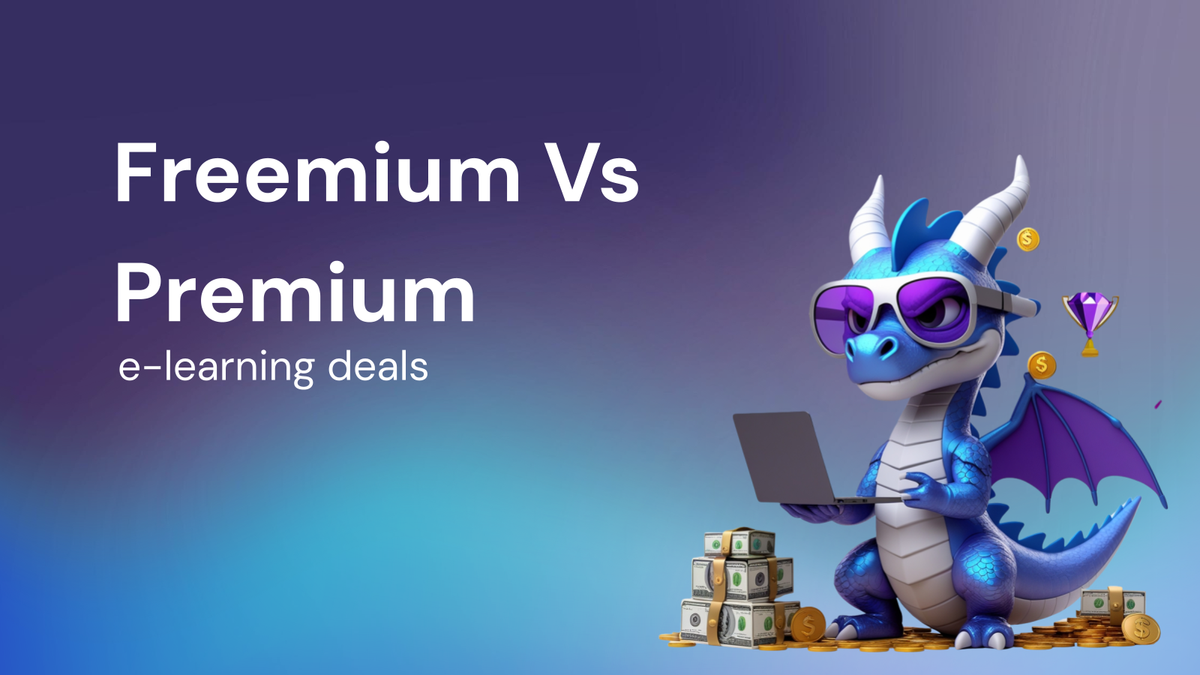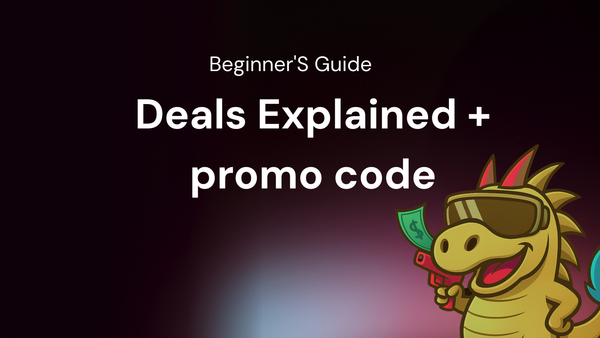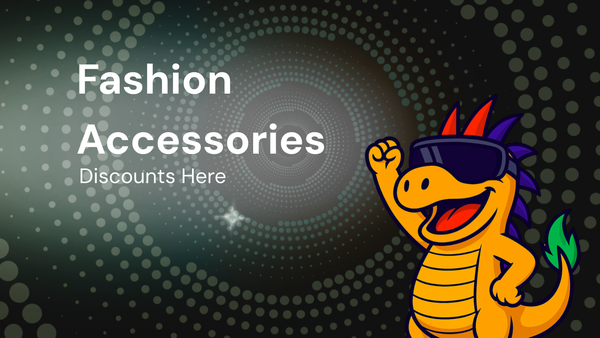Freemium Vs Premium Every Shopper Should Know for e-learning platforms hidden deals

Freemium Vs Premium: Every Shopper Should Know for E-Learning Platforms Hidden Deals
The world of online learning has exploded, offering unprecedented access to knowledge and skills development. But navigating the landscape of e-learning platforms can be overwhelming, especially when faced with the choice between "Freemium" and "Premium" models. This article aims to demystify these approaches, equipping you with the knowledge to make informed decisions and potentially uncover hidden deals that align with your learning goals and budget.
Understanding the E-Learning Landscape: A Quick Overview
Before diving into the Freemium vs. Premium debate, let's briefly touch on the different types of e-learning platforms:
- Massive Open Online Courses (MOOCs): Platforms like Coursera, edX, and FutureLearn offer courses from top universities worldwide, often with free audit options.
- Skills-Based Platforms: Platforms like Udemy, Skillshare, and LinkedIn Learning focus on practical skills development in areas like programming, design, and business.
- Subscription-Based Platforms: Platforms like MasterClass and Treehouse offer curated content libraries for a monthly or annual fee.
- Corporate Training Platforms: Platforms designed for businesses to train their employees, often with custom content and reporting features.
Understanding the specific type of platform you're considering is crucial, as the Freemium and Premium models can vary significantly between them.
What is the Freemium Model in E-Learning?
The term "Freemium" is a portmanteau of "free" and "premium." In the context of e-learning, it means that a platform offers a basic level of access to its content and features for free, while charging for more advanced features, content, or support.
Key Characteristics of Freemium E-Learning Platforms:
- Free Basic Access: Core features or a limited selection of courses are available without payment.
- Upselling to Premium: The platform actively encourages users to upgrade to a paid "Premium" version.
- Limited Content: Free users typically have access to a smaller subset of the platform's overall content library.
- Feature Restrictions: Certain features, such as quizzes, assignments, personalized feedback, or certificates of completion, may be restricted to Premium users.
- Advertisements or Data Collection: Some Freemium platforms may display advertisements or collect user data to offset the cost of providing free access.
Examples of Freemium E-Learning Offerings:
- Coursera/edX Audit Options: Many MOOCs allow you to "audit" courses for free, meaning you can access the lectures but won't be able to submit assignments or receive a certificate.
- Skillshare Free Classes: Skillshare offers a selection of free classes that provide a taste of the platform's content and teaching style.
- Limited LinkedIn Learning Content: LinkedIn Learning may offer free previews of courses or access to specific learning paths.
Advantages of the Freemium Model:
- Risk-Free Exploration: You can try out the platform and its content without committing any money.
- Access to Valuable Content: Even the free version can provide access to valuable knowledge and skills.
- Potential for Upskilling: You can use the free content to learn basic concepts and determine if you want to invest in more advanced learning.
- Cost-Effective for Casual Learners: If you only need access to a limited amount of content, the free version might be sufficient.
Disadvantages of the Freemium Model:
- Limited Functionality: The free version may lack features that are essential for serious learning, such as assignments, feedback, or certificates.
- Content Restrictions: The free content may be limited in scope or depth, preventing you from gaining a comprehensive understanding of the subject.
- Upselling Pressure: You may be constantly bombarded with offers to upgrade to the Premium version.
- Advertisements: Some Freemium platforms display advertisements, which can be distracting.
- Potential Data Privacy Concerns: Be mindful of the platform's data collection policies.
What is the Premium Model in E-Learning?
The "Premium" model, in contrast to Freemium, typically involves a direct payment for access to the platform's content and features. This payment can be a one-time purchase for a specific course, a subscription for access to a library of courses, or a bundled package of services.
Key Characteristics of Premium E-Learning Platforms:
- Paid Access: You must pay a fee to access the platform's content and features.
- Comprehensive Content: Premium platforms typically offer a wide range of courses and resources.
- Full Functionality: You have access to all features, including assignments, feedback, certificates, and community forums.
- No Advertisements: Premium platforms generally do not display advertisements.
- Dedicated Support: Premium platforms often provide customer support to help users with technical issues or content-related questions.
Examples of Premium E-Learning Offerings:
- Udemy Course Purchases: You pay a one-time fee to purchase individual courses on Udemy.
- MasterClass Subscriptions: You pay a monthly or annual subscription to access MasterClass's library of courses taught by renowned experts.
- Treehouse Subscriptions: You pay a monthly subscription to access Treehouse's library of courses focused on web development and design.
- Corporate Training Platform Licenses: Businesses pay licensing fees for their employees to access corporate training platforms.
Advantages of the Premium Model:
- Unrestricted Access: You have full access to all content and features.
- Comprehensive Learning Experience: Premium platforms offer a more complete and immersive learning experience.
- Higher Quality Content: Premium platforms often invest more in content production and quality control.
- Dedicated Support: You can receive help from customer support if you encounter any issues.
- No Advertisements: You can learn without distractions.
Disadvantages of the Premium Model:
- Financial Commitment: You must pay a fee upfront, which may be a barrier for some learners.
- Risk of Dissatisfaction: If you don't like the content or teaching style, you may not be able to get a refund.
- Potential for Overwhelm: The sheer volume of content on some Premium platforms can be overwhelming.
- Subscription Fatigue: Subscribing to multiple Premium platforms can become expensive and difficult to manage.
Freemium vs. Premium: Which Model is Right for You?
The best choice between Freemium and Premium depends on your individual needs, learning goals, and budget. Here's a breakdown of factors to consider:
- Learning Goals: Are you looking to learn a specific skill quickly, or are you interested in a more comprehensive and in-depth learning experience? If you need a quick skill boost, Freemium might suffice. For deeper learning, Premium is usually the better option.
- Budget: How much are you willing to spend on e-learning? Freemium is free, but Premium platforms can vary in price.
- Learning Style: Do you prefer self-paced learning, or do you benefit from structured courses with assignments and feedback? Premium platforms often offer more structured learning paths.
- Time Commitment: How much time do you have to dedicate to e-learning? Freemium options can be good for casual learners, while Premium platforms may require a more significant time commitment.
- Motivation: Are you self-motivated, or do you need external accountability to stay on track? Premium platforms often provide features like assignments, deadlines, and community forums to help you stay motivated.
- Specific Course Needs: Does the free content cover the topics you are interested in or do you need the premium content to go more in depth?
Hidden Deals and Strategies for Saving Money on E-Learning Platforms
Regardless of whether you choose Freemium or Premium, there are several strategies you can use to save money and find hidden deals:
- Audit MOOCs: Many MOOCs on platforms like Coursera and edX allow you to audit courses for free, giving you access to lectures and learning materials without paying for a certificate. Search "[Course Name] Coursera Audit" or "[Course Name] edX Audit" to find these options.
- Utilize Free Trials: Many Premium platforms offer free trials. Take advantage of these trials to explore the platform and its content before committing to a subscription. Remember to set a reminder to cancel the trial before you're charged if you don't want to continue. Example search term: "[Platform Name] free trial".
- Look for Discounts and Promotions: E-learning platforms often offer discounts and promotions, especially during holidays or special events. Sign up for their email lists or follow them on social media to stay informed. Search "[Platform Name] discount code" or "[Platform Name] coupon code".
- Explore Bundle Deals: Some platforms offer bundled packages of courses or services at a discounted price. Consider whether these bundles align with your learning goals.
- Leverage Student Discounts: If you're a student, you may be eligible for discounts on e-learning platforms. Check with your school or university to see if they have any partnerships with e-learning providers.
- Use Library Resources: Many libraries offer free access to e-learning platforms like LinkedIn Learning or Skillshare to their patrons. Check with your local library to see what resources they offer.
- Check for Corporate Training Programs: Your employer may offer access to e-learning platforms as part of their employee benefits program. Ask your HR department if any such programs are available.
- Follow E-Learning Deal Websites and Communities: There are websites and online communities dedicated to sharing deals and discounts on e-learning platforms. Search for phrases like "e-learning deals reddit" or "online course discounts website" to find relevant resources.
- Compare Prices Across Platforms: Before purchasing a course or subscription, compare prices across different platforms to ensure you're getting the best deal.
- Consider Lifetime Deals: Some platforms, particularly on sites like AppSumo, offer lifetime deals for access to their content. These deals can be a great value if you plan to use the platform for a long time. Search "AppSumo e-learning" to see current offerings.
- Explore Open Educational Resources (OER): OER are freely available educational materials that you can use and adapt for your own learning. Websites like MIT OpenCourseWare and OpenLearn offer a wealth of free content.
- "Shop Around" for Individual Courses: For platforms like Udemy, prices can fluctuate dramatically. Keep an eye on courses you're interested in and add them to your wishlist. You'll often receive notifications when they go on sale.
- Check for "Free Courses" Sections: Some platforms have sections specifically dedicated to free courses. These are often introductory courses or shorter tutorials, but they can be a great way to get started with a new subject.
- Look for Sponsored Content and Partnerships: Sometimes brands or organizations will partner with e-learning platforms to offer free access to specific courses or learning paths related to their industry.
- Consider the Value Proposition Beyond Content: Don't just focus on the content itself. Factor in features like community support, mentorship opportunities, and career services when evaluating the overall value of a platform. A slightly more expensive platform with better support might be a better long-term investment.
Example Search Instructions to Uncover Hidden Deals:
Here are some example search instructions you can use to uncover hidden deals on e-learning platforms:
- "[Platform Name] free courses": This will help you find free content offered by a specific platform.
- "[Platform Name] student discount": This will show you if a platform offers discounts for students.
- "[Course Name] [Platform Name] coupon": This will help you find coupon codes for specific courses on a platform.
- "best e-learning deals reddit": This will lead you to Reddit threads discussing current e-learning deals.
- "lifetime access e-learning": This will help you find platforms offering lifetime access deals.
- "open educational resources [Subject]": This will help you find free and open educational resources on a specific subject.
The Importance of Reading Reviews and Community Feedback
Before committing to any e-learning platform, it's crucial to read reviews and community feedback. Look for reviews on independent websites and forums, not just on the platform's website itself. Pay attention to comments about the quality of the content, the effectiveness of the instructors, the responsiveness of customer support, and the overall user experience. Websites like Trustpilot and G2 can provide valuable insights.
Focusing on Your Learning Objectives: A Crucial Step
Ultimately, the most important factor in choosing an e-learning platform is whether it aligns with your learning objectives. Before you start browsing platforms, take some time to clearly define what you want to learn and why. What skills do you want to acquire? What knowledge do you want to gain? What are your career goals? Once you have a clear understanding of your learning objectives, you can choose a platform that is best suited to help you achieve them.
Conclusion: Making an Informed Choice
The choice between Freemium and Premium e-learning platforms is a personal one. By understanding the characteristics of each model, considering your individual needs and goals, and using the strategies outlined in this article, you can make an informed decision that will help you achieve your learning objectives and unlock your full potential. Remember to thoroughly research the platforms, look for hidden deals, read reviews, and focus on your learning objectives. Happy learning!




